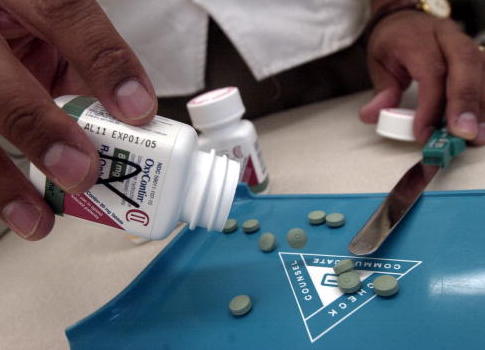The Drug Enforcement Administration collected a record-busting 912,305 pounds (456 tons) of prescription drugs during its fourteenth National Prescription Drug Take Back Day, new numbers released Tuesday showed.
Americans voluntarily turned over their unused, expired, or unwanted prescription drugs to the DEA in partnership with more than 4,200 local, state, and tribal law enforcement officers, who collected the drugs at more than 5,300 collection sites. The new record brings the total amount of drugs collected since Take Back Day began seven years ago to 9,015,668 pounds, or 4,508 tons.
"By taking dangerous drugs off of our streets, we keep addiction from spreading," said Attorney General Jeff Sessions, under whose Department of Justice the DEA is organized. "One of the most important ways we do that is through the DEA’s semi-annual Prescription Drug Take Back Days. The latest Take Back day was the most successful yet, safely disposing of a record amounts of drugs. I have no doubt that will save lives."
The agency's Office of Diversion Control spent twice as much on advertising for the October event as it did in April. A DEA spokesperson said it hopes to continue increasing funding for the event.
Many opioid addicts begin their journey to abuse by consuming prescribed opioids, often borrowed or stolen from family members who have received the original prescription. Drug Take Back Day is intended to curb this trend by allowing for safe, legal disposal of unused prescription drugs.
"More people start down the path of addiction through the misuse of opioid prescription drugs than any other substance. The abuse of these prescription drugs has fueled the nation’s opioid epidemic, which has led to the highest rate of overdose deaths this country has ever seen," said acting DEA Administrator Robert W. Patterson.
Opioids are the leading cause of drug overdose deaths in the United States, and drug overdoses are the leading cause of injury death, outpacing car crashes, homicide, and suicide. Around one in seven Americans admits to having abused opioids at some point in their lives.
Among the many law enforcement partners that participated in Drug Take Back Day was the Pittsburgh police department. That city, like many in the rust belt, has been hard struck by the opioid epidemic—the medical examiner in Allegheny county, of which Pittsburgh is the seat, found a 44 percent spike in opioid deaths between 2015 and 2016.
The Pittsburgh PD collected 319 pounds of prescription drugs on Take Back Day, a public information officer told the Free Beacon.
"The Drug Take Back Day gives us the platform to give the public an opportunity to combat the abuse of prescription drugs and accidental poisonings. Our residence look forward to the opportunity to participate, judging from the feedback we receive on social media," said the Pittsburgh representative.
The first Take Back Day, in September of 2010, was inspired by a problem DEA had recognized with proper disposal of controlled prescription drugs. The Environmental Protection Agency and Food and Drug Administration had both that year expressed concern with Americans flushing prescription drugs down the toilet, causing them to seep into the water supply.
However, under the Controlled Substances Act—which the DEA exists to enforce—patients who had been prescribed controlled narcotics could not legally give away their drugs, even for purposes of disposal. The FDA and EPA were recommending that patients throw their drugs out in unappealing ways—mixed in with kitty litter or coffee grounds, for example—so addicts would not be tempted to steal them.
The DEA had the resources to properly incinerate drugs, and so organized collections.
"Everyone was pleasantly surprised with the enthusiasm with that. It turned out to be a big event with a lot of response," the DEA spokesperson explained.
Congress responded to this success by amending the Controlled Substances Act the following month to allow individuals to give their controlled substances away for purposes of disposal. By 2013, the White House's Office of National Drug Control Policy considered disposal one of the four "pillars" of preventing prescription drug abuse.
Now, fighting prescription opioid abuse has become a top priority of the federal government. Days before Take Back Day, President Donald Trump declared the epidemic a public health crisis; last Wednesday, the President's Commission on Combating Drug Addiction and the Opioid Crisis released a draft of its final recommendations, calling for aggressive state and federal action to combat the crisis that claimed almost 50,000 lives in 2016.
The next Drug Take Back Day will be April 28, 2018. Information about finding a site for drug disposal is available from the DEA.
